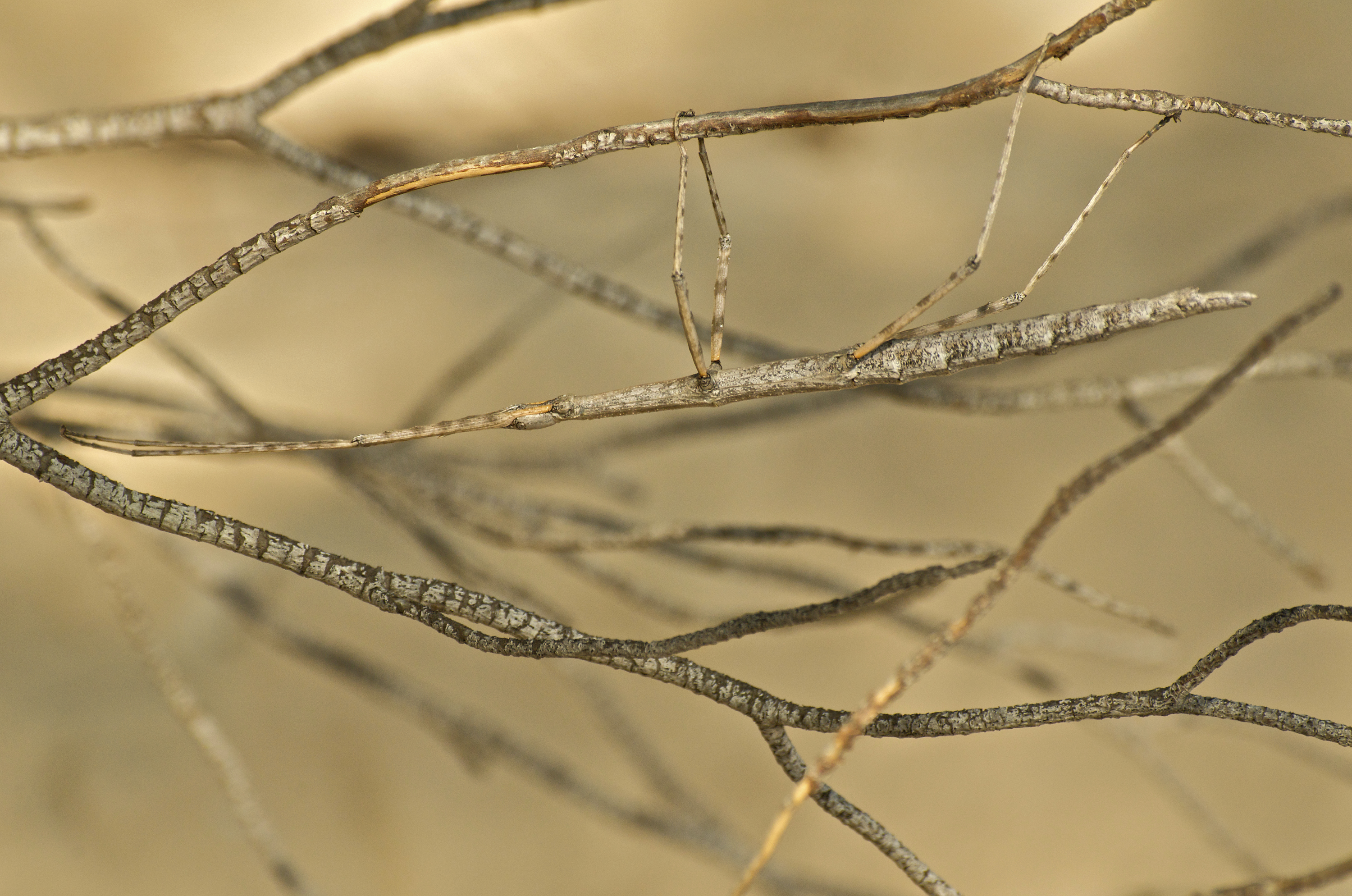Stick insect is an insect best known for its twiglike appearance. It is also sometimes called a phasmid or walking stick. There are thousands of species (kinds) of stick insects. They are found on every continent except Antarctica.

The strange appearance of stick insects acts as camouflage. It helps them hide from predators (hunting animals). Many kinds of stick insects not only look like sticks, but also act like them. Some may remain stiff and motionless for long periods of time. Others may rock back and forth to look like twigs swaying in the wind. Stick insects may curl up their abdomen to imitate such dangerous animals as ants or scorpions to try to frighten predators. They may also produce loud noises, give off a foul-smelling spray, or flash bright colors when disturbed. When attacked, some stick insects defend themselves by lashing out with spikes on their legs.
Stick insects are herbivorous—that is, they eat plants. They measure from 1/2 inch to 14 inches (1.3 to 36 centimeters) long. Females are usually larger than males.
Female stick insects lay 100 to 2,000 eggs. Depending on the species, nymphs (young) hatch after one month to more than a year. Stick insects go through several stages of larval (immature) development. They grow larger each time they molt (shed their exoskeleton) until they reach full size.
One species, the Lord Howe Island stick insect, was found only on a small volcanic island off the eastern coast of Australia. In the early 1900’s, this large insect was preyed upon by rats that escaped to the island from a shipwreck. By 1920, scientists believed the Lord Howe Island stick insect was extinct. However, in 2001, scientists found them living on nearby Ball’s Pyramid island. Scientists hope to reintroduce the Lord Howe Island stick insect to Lord Howe Island.
In the United States, some species of walking sticks are pests. They damage and kill some trees by eating their leaves.
